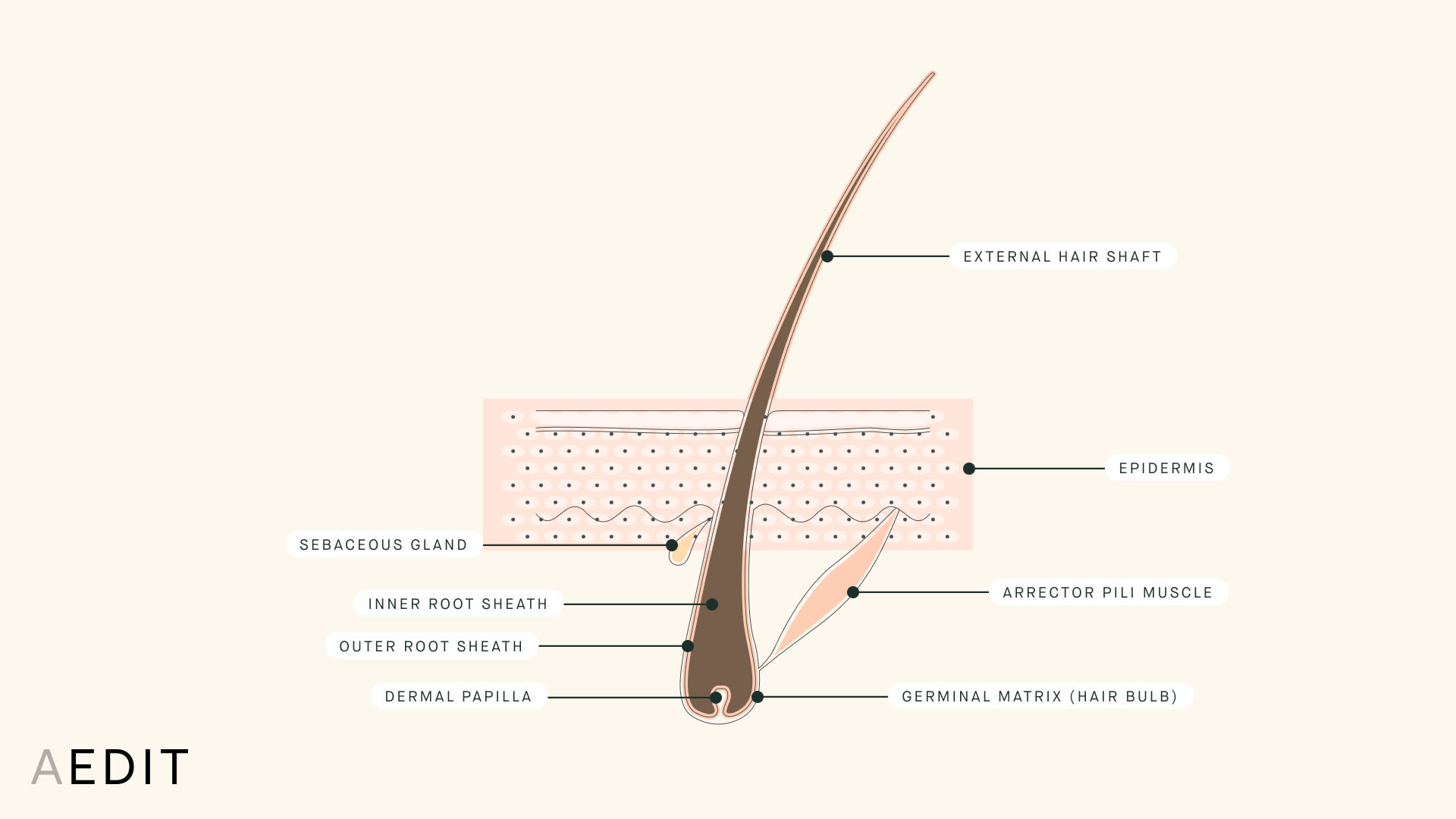
The Skinny
Hair loss is a frustratingly common concern for both men and women. Millions of Americans experience undesirable hair loss due to genetic conditions, medications, hormonal imbalances, stress, weight loss, and even inappropriate hair care (learn more in our complete guide to Hair Loss Concerns). Fortunately, numerous non-surgical treatments exist to promote hair growth and restore damaged hair follicles from the comfort of your own home.
The Specifics
Who might consider non-surgical hair restoration treatments?
Hair loss (especially male pattern baldness) is not just a concern for aging men. Young men and women of all ages can experience hair loss. Genetic conditions, medical pathologies, pregnancy, stress, weight loss, nutritional deficiencies, and poor personal hair care can all be underlying hair loss.
The Anatomy of a Hair Follicle

Hair loss is also not relegated to the scalp. Although, scalp hair loss can cause bald spots, and result in the appearance of a thinning or receding hairline. This is a common concern for many men, but can also be seen in women. Undesirable hair loss may additionally present on the face-typically the beard area for men, and eyebrows for both men and women. In many cases, body hair loss can be indicative of underlying medical pathology and should be addressed with a medical professional.
What can you expect from non-surgical hair restoration treatments?
As the name 'non-surgical' implies, these treatments are generally minimally invasive and have little to no recovery time making them attractive options for many candidates. As an added bonus, they can be performed in your own home. Results are typically temporary and require maintenance, but can be seen in as little as three months with consistent use.
When should you consider a non-surgical hair restoration?
Ideally, non-surgical hair restoration procedures should be started as early in the hair loss process as possible to maximize potential for regeneration and minimize existing damage. Considerations need to be made for underlying medical issues, potential drug interactions, and ability to commit to daily treatments.
Why should you consider a non-surgical hair restoration?
While the results of non-surgical hair restoration may not be as fast or permanent as surgical options (you can also check out our guide to Surgical Hair Restoration Solutions), they are less invasive, have minimal or no recovery, and can often be performed at home.
Non-Surgical Restoration
Medications, topical treatments, and light therapy treatments can all be performed safely and effectively from the comfort of your home. These treatments have little to no recovery time and minimal side effects. With regular use, results can be seen in weeks to monthst.
Non-Surgical Hair Transplant
Platelet-Rich Plasma (PRP) Injections
Micropigmentation
Oral & Topical Medication
At-Home Light Therapy
The Takeaway
Experiencing hair loss can be both disappointing and embarrassing. Late night infomercials and magazine ads tout multiple home hair loss products to restore your luscious locks. These solutions are not be the safest choice for your hair, but there are numerous tried-and-trusted hair restoration procedures to promote hair regrowth, healthy hair follicles, and correct thinning hair. Hair transplantation via strip harvesting (FUT) and follicular unit extraction (FUE) are invasive procedures to correct hair loss, but non-invasive hair loss treatments can be similarly effective with minimal side effects. New hair and increased hair density can be yours — no hair plugs required.





